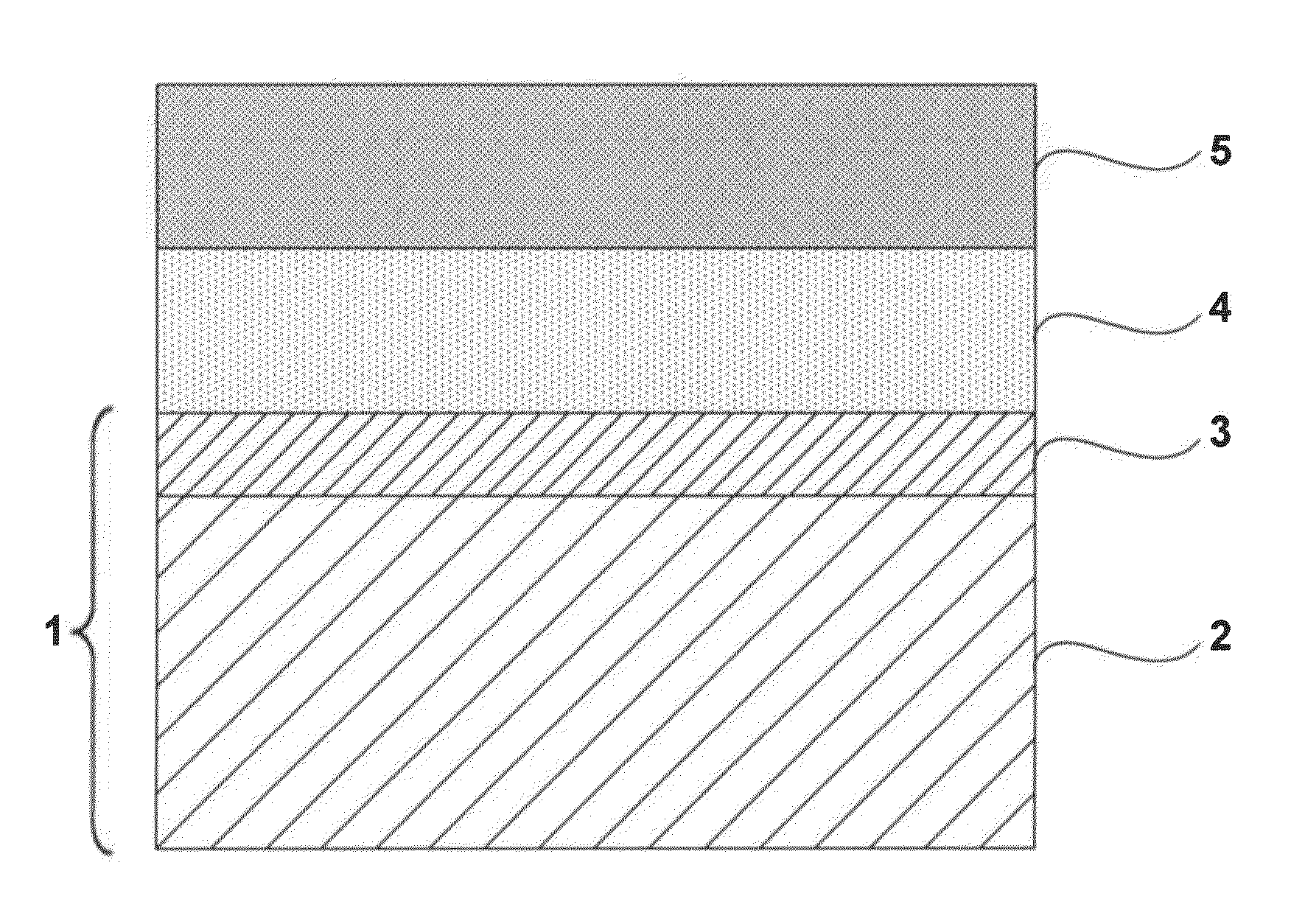Base material for artificial leather and grained artificial leather
a technology of artificial leather and base material, which is applied in the direction of weaving, lighting and heating apparatus, drying machines with progressive movements, etc., can solve the problems of mainly used nonwoven fabric obtained from long microfine fibers, difficult to split or divide uniformly, and -finished artificial leathers, etc., to achieve softness without resistance, high peeling strength, and fine bent wrinkles
- Summary
- Abstract
- Description
- Claims
- Application Information
AI Technical Summary
Benefits of technology
Problems solved by technology
Method used
Image
Examples
production example 1
Production of Water-Soluble, Thermoplastic Polyvinyl Alcohol-Based Resin
[0060]A 100-L pressure reactor equipped with a stirrer, a nitrogen inlet, an ethylene inlet and an initiator inlet was charged with 29.0 kg of vinyl acetate and 31.0 kg of methanol. After raising the temperature to 60° C., the reaction system was purged with nitrogen by bubbling nitrogen for 30 min. Then, ethylene was introduced so as to adjust the pressure of the reactor to 5.9 kgf / cm2. A 2.8 g / L methanol solution of 2,2′-azobis(4-methoxy-2,4-dimethylvaleronitrile) was purged with nitrogen by nitrogen gas bubbling. After adjusting the temperature of reactor to 60° C., 170 mL of the initiator solution was added to initiate the polymerization. During the polymerization, the pressure of reactor was maintained at 5.9 kgf / cm2 by introducing ethylene, the polymerization temperature was maintained at 60° C., and the initiator solution was continuously added at a rate of 610 mL / h. When the conversion of polymerization ...
example 1
[0064]The water-soluble, thermoplastic PVA (ethylene-modified PVA, sea component) produced above and an isophthalic acid-modified polyethylene terephthalate (degree of modification of 6 mol %, island component) were extruded at 260° C. form a spinneret for melt composite spinning (number of islands: 25 per one microfine fiber-forming fiber) in a sea component / island component ratio of 30 / 70 (by mass). The ejector pressure was regulated such that the spinning speed was 4500 m / min. The long fibers were collected on a net, to obtain a long fiber web having a mass per unit area of 30 g / m2 which was composed of microfine fiber-forming fibers having an average fineness of 2.0 dtex.
[0065]A superposed body of 12 long fiber webs prepared by crosslapping was sprayed with an oil agent for preventing needle break, and then, subjected to needle punching alternately from both sides at a density of 3000 punch / cm2 and a punching depth of 8 mm using single-barb needles (tip-to-barb distance: 3 mm; t...
example 2
[0069]The entangled nonwoven fabric produced in Example 1 was added with water in an amount of 30% by mass of PVA and heat-treated in an atmosphere of 95% relative humidity and 70° C. for 3 min under a tension-free condition. By the heat treatment, the entangled nonwoven fabric shrunk in an area shrinkage of 52% to increase the apparent density. The heat-treated entangled nonwoven fabric was pressed by a hot roll at 120° C., to obtain a smoothened nonwoven fabric having a mass per unit area of 910 g / m2 and an apparent density of 0.50 g / cm3. After adding water to one surface of the nonwoven fabric in an amount of 35 g / m2 using gravure rolls, the surface was pressed by a roll at 120° C. to densify only the surface portion, thereby obtaining a nonwoven fabric having an overall apparent density of 0.69 g / cm3. The pressed surface was a luster, smooth surface. The observation of the cross section under an electron microscope showed that a film layer of about 70 μm thick was formed in the ...
PUM
| Property | Measurement | Unit |
|---|---|---|
| length | aaaaa | aaaaa |
| melting point | aaaaa | aaaaa |
| melting point | aaaaa | aaaaa |
Abstract
Description
Claims
Application Information
 Login to View More
Login to View More - R&D
- Intellectual Property
- Life Sciences
- Materials
- Tech Scout
- Unparalleled Data Quality
- Higher Quality Content
- 60% Fewer Hallucinations
Browse by: Latest US Patents, China's latest patents, Technical Efficacy Thesaurus, Application Domain, Technology Topic, Popular Technical Reports.
© 2025 PatSnap. All rights reserved.Legal|Privacy policy|Modern Slavery Act Transparency Statement|Sitemap|About US| Contact US: help@patsnap.com


